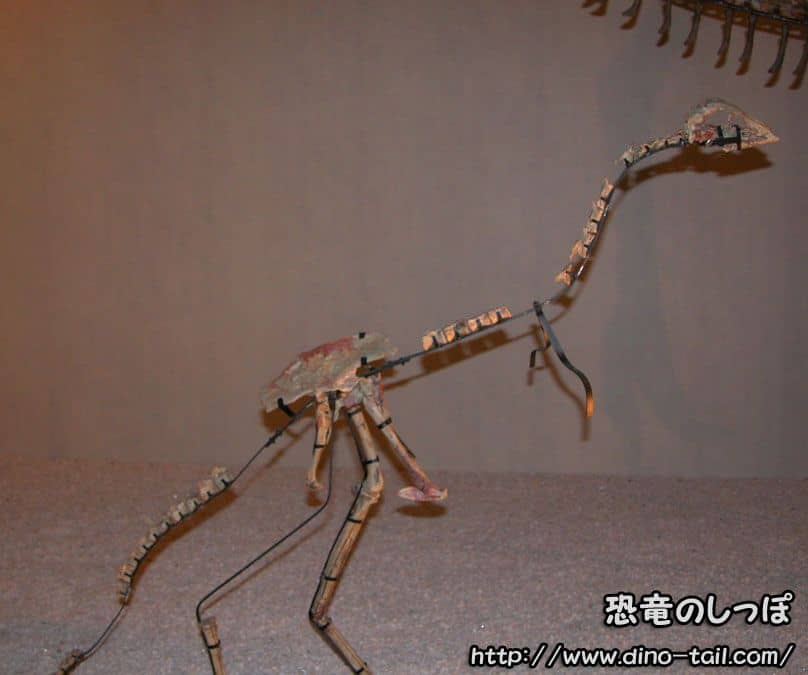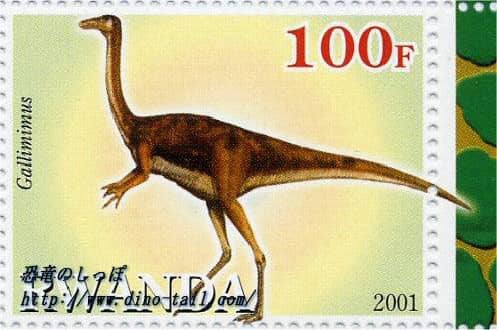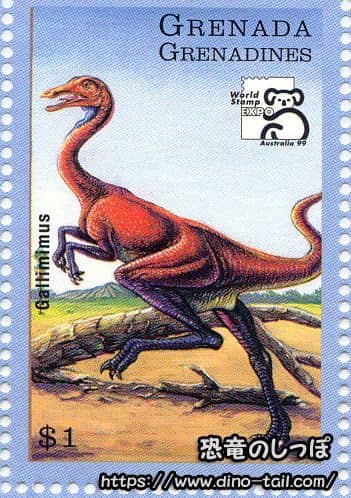About Gallimimus
| Scientific Name (Genus) | Gallimimus |
| Meaning of Name |
Chicken mimic
gallus (chicken) [Latin] - mīmos (mimic, imitator) [Greek] |
| Classification | Saurischia, Theropoda (Tetanurae) |
| Total Length | Approx. 4 - 6m |
| Diet | Omnivorous |
| Period | Late Cretaceous |
| Species |
Gallimimus bullatus
Gallimimus mongoliensis |
| Year of Paper Publication | 1972 |
| Genus Name Publication | Osmolska, H.; Roniewicz, E.; Barsbold, R. (1972). A New Dinosaur, Gallimimus bullatus N. GEN., N. SP. (Ornithomimidae) From the Upper Cretaceous of Mongolia. Palaeontologia Polonica, 27. |
Characteristics
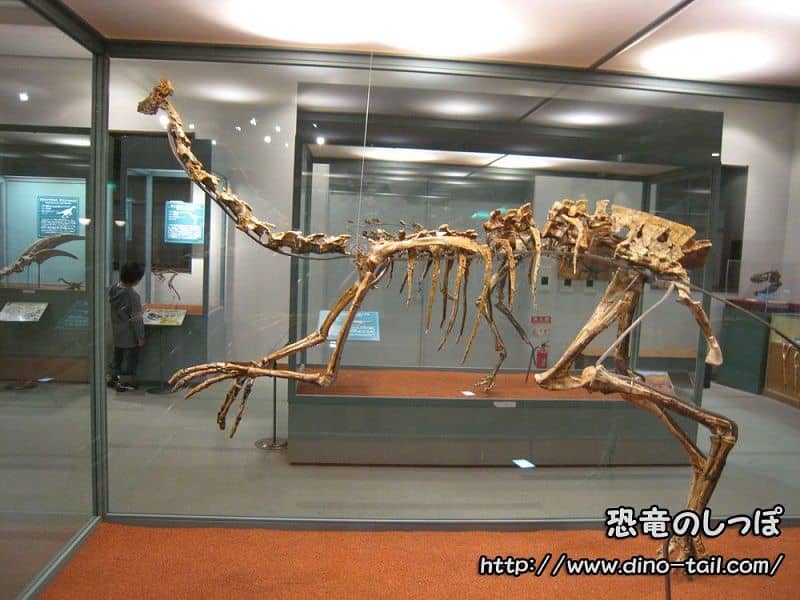
Gallimimus is estimated to have been one of the fastest dinosaurs.
With a light body (estimated 400kg) and powerfully developed hind legs, this group is sometimes called "ostrich dinosaurs."
Compared to its ancestors, there seems to have been a change in the bone structure of its feet. The three bones that make up the instep have different thicknesses. This structure provided flexibility to the foot and served to cushion the impact of running. Furthermore, it possessed features of a fast animal, such as the length of its tibia relative to its body, and it is thought to have been able to run at speeds of 45-60 km/h. Its long tail was used for balance.
Escaping on its legs seems to have been its most effective means of defense against predators.
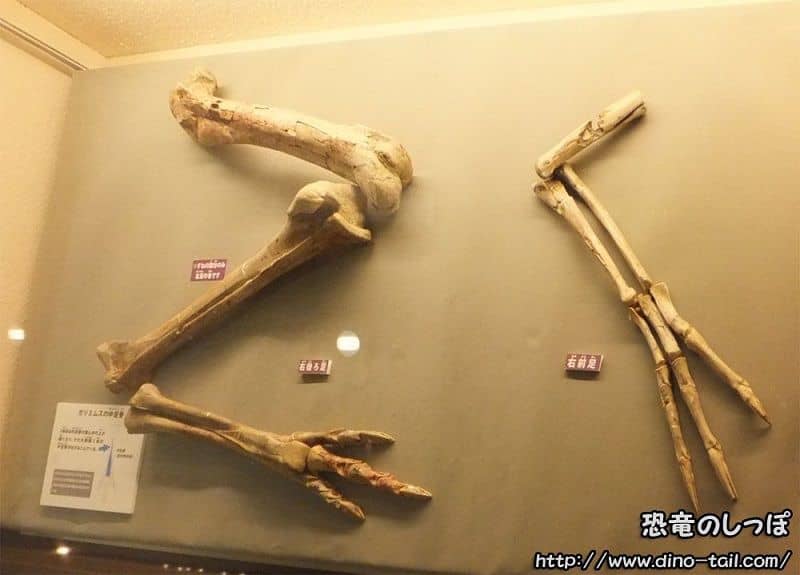
In 1988, a study was published suggesting that the eyeballs of Gallimimus did not move much.
Like modern herbivores, its side-facing eyes provided a wide field of vision, but it could not look around without moving its neck. It might have been constantly on the lookout for predators by turning its head, much like an ostrich or a pigeon.
Fossil skulls have also shown that it had a large brain, leading to the belief that Gallimimus was a relatively intelligent dinosaur.
Also, since individuals of various growth stages have been found together, it is highly likely that Gallimimus formed herds composed of members of different ages and lived in groups.
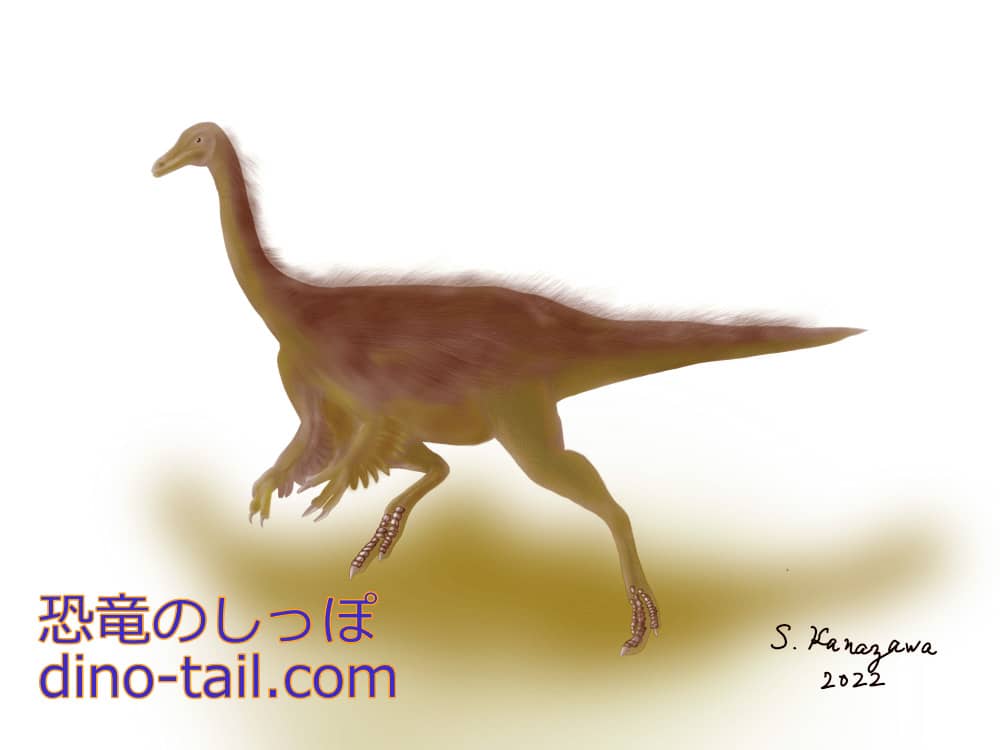
Diet: A Mysterious Diet
The diet of the toothless theropod Gallimimus has long been a subject of debate.
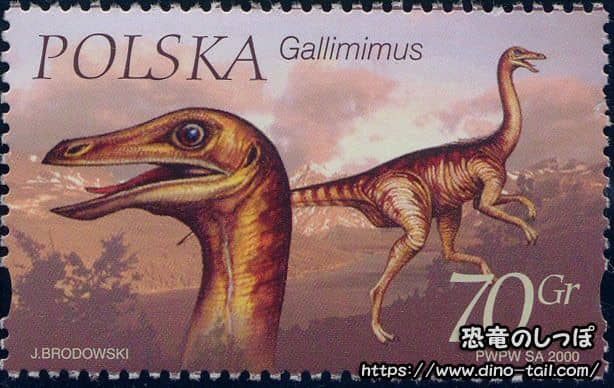
In 2001, a study was published suggesting that it had a comb-like filter structure (lamellae) inside its beak, similar to a flamingo, which garnered significant attention for the "filter-feeding theory"—that it filtered small crustaceans, fish, plants, insects, and algae from the water.
However, subsequent research has also given weight to the "herbivory theory," which posits that this structure was for cropping tough plants. The discovery of gastroliths (stomach stones) also supports the possibility that it ground up plants.
Currently, many researchers believe that rather than specializing in a particular food, it was an "omnivore" that primarily ate plants but would also consume insects and small animals if the opportunity arose.
The Discovery of Feathers and "Wings"
For a long time, Gallimimus was depicted as being covered in scales, much like its appearance in the movie "Jurassic Park." However, recent research has completely changed that image.
Although no feather impressions have been found with Gallimimus fossils themselves, traces of feathers have been discovered on its close relative, Ornithomimus. What was particularly surprising was the discovery that adult Ornithomimus had "wings" on their forelimbs, composed of true feathers with shafts. These wings were not for flying but are thought to have been used for courtship displays or for brooding eggs.
Because of this discovery, the current scientific consensus is that Gallimimus, as it grew, would have been covered in feathers like an ostrich and possessed wings on its forelimbs . Future illustrations will likely depict it with feathers more often.
Discovery and Publication
From 1963 to 1965, a joint Polish-Mongolian Academy of Sciences expedition conducted excavations in the Gobi Desert.
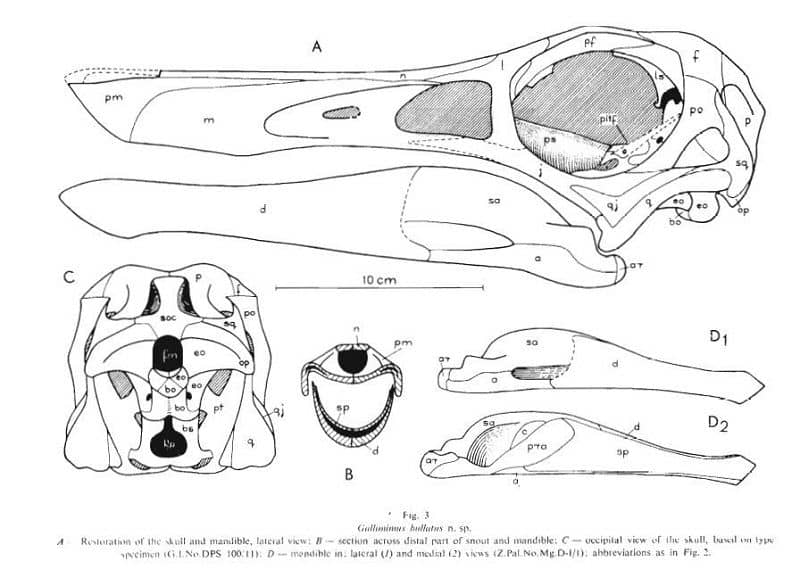
Source: Osmolska, H.; Roniewicz, E.; Barsbold, R. (1972). A New Dinosaur, Gallimimus bullatus N. GEN., N. SP. (Ornithomimidae) From the Upper Cretaceous of Mongolia. Palaeontologia Polonica, 27.
In 1972, Mongolian paleontologist Rinchen Barsbold and others described the new genus and species Gallimimus bullatus based on a specimen excavated at that time (specimen IGM 100/11). Specimen IGM 100/11 consists of a nearly complete skeleton, including a distorted snout, an incomplete lower jaw, a vertebral series, a pelvis, and other bones.
Gallimimus Stamp & Fossil Gallery
